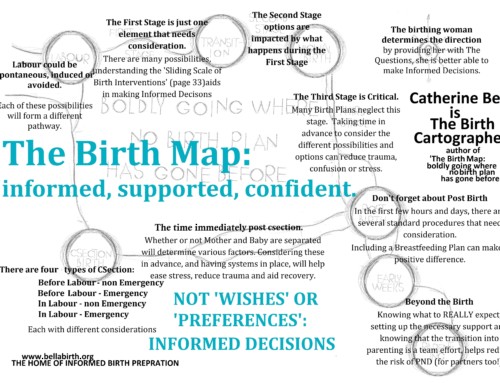By Tracy G. Cassels
But there’s a caveat to this. If you look back in history, apparently pregnant women and young children do not qualify as deserving of this same treatment. Like it or not, pregnant women and the children they bear are the guinea pigs of medicine. For us and our children, it is safe until proven otherwise (despite how often that otherwise crops up) and yet our faith in the medical establishment as a whole keeps many people from speaking out. Some of you may even question what I’m saying, so let us take a little look down memory lane for a few examples to see exactly what I’m talking about… “Twilight Sleep”[2] The case of Twilight Sleep is particularly interesting because in some ways it was women who brought this one on themselves, but the role of doctors in this one still cannot be ignored. For those who don’t know, Twilight Sleep refers to a drug cocktail that was given to women in the early 20th Century which caused them to completely forget about childbirth. Founded in Germany, it gained popularity there before moving over to the United States. Interestingly, when the doctors in Germany first advocated its use in pregnancy (back in 1906), doctors around the world spoke out against it and the dangers it posed to women and their babies as the drugs involved were highly toxic and had very serious side effects. Because of this, it was not doctors who brought this to the US, but women. The desire for a painless birth was something American women wanted and so they pushed their doctors for Twilight Sleep (with the help of lay articles on its wonders) and it became a huge deal in American hospitals in 1914-15. Importantly, most non-OB doctors continued to write about the dangers and side effects of the drugs involved, but the lay press and women were raving about it and so demand increased and OBs filled that demand. That is until reports of how women had to be restrained during labour and were screaming blue murder throughout. Babies were reportedly turning blue after birth and then there was a report of a woman dying because of it. That put an end to the use of Twilight Sleep. So how did we get there? At the time, the field of Obstetrics was still new and looking to establish itself and so out went protocol and respect for research, and in went doing whatever the patient wanted without explanation of the risks or even being properly trained to administer the drugs. I’m all for patient advocacy, but I’m also for informed consent, something that was really not present at the time or for the women undergoing a twilight sleep to give birth. As evidence, as soon as reports emerged of what twilight sleep truly entailed, it ended. But the field of Obstetrics had made its mark and achieved what it wanted – legitimacy. X-Rays X-rays have been in use for over a century, and there is still debate over the utility of x-rays during pregnancy. In fact, the American Academy of Family Physicians states that receiving x-rays while pregnant is entirely safe. For many years pregnant women were given abdominal x-rays during pregnancy to examine the fetus or check for other potential problems. Important to note here is that these women were not given these x-rays because they needed them for medical reasons – they were done to check the status of the fetus like ultrasounds are used today. However, starting in the 1950s researchers have continuously found increased risk of cancers and other health problems with certain types of x-rays during pregnancy[3][4][5], yet women STILL are told they have to have x-rays for a variety of issues (though luckily abdominal x-rays are much less frequent, but still do occur). Don’t get me wrong – there ARE cases in which an x-ray is highly advisable (e.g., checking for cancer), but not all the time, especially when it’s an issue that might be able to wait or in which an alternate method may be available. The stance by the AAFP is distressing on many levels because doctors take it as a means to argue that certain medical tests are safe and women and their babies who do not know better may end up facing the consequences of these decisions. Unlike diagnostic procedures for other populations in which benefit has to be proven, it seems the traditional use of the x-ray for non-emergency purposes is still given more weight than the potential damage done to the developing baby. Thalidomide Just shortly after realizing x-rays hurt babies, doctors in Germany developed Thalidomide, a drug that is currently used today to treat cancer, but that had the side effect of making nausea and other ills go away, thus its marketing as a cure for morning sickness. Interestingly, the USA was one of the few countries where it was never licensed for use as a morning sickness drug, but not without intense pressure from the pharmaceutical company that wanted to license it. Other countries licensed it in the late 1950s and its use continued until 1961 (or 1962, in the case of Canada), when William McBride, an Australian obstetrician-gynecologist published a letter to the Lancet outlining his hypothesis of a link between birth defects and Thalidomide[6]. Later these links would be proven[7]. Thanks to the lack of systematic research on the drug as a cure for morning sickness–based on the assumption that nothing would cross the placenta—between 10,000 and 20,000 babies were affected, most of whom died shortly after birth. In the UK, 2000 babies were affected and only 466 have survived[8]. Those survivors also face a wide range of disabilities throughout their life, ranging from missing limbs to hypoplasia to congenital heart disease[9]. Interestingly, this is another case of women demanding something and doctors giving in without proper research. In the USA, the few known cases were due to samples being given out and women asking for them from their doctor. Of course, this in no way puts the blame on women – anyone who’s experienced morning sickness can attest that asking for a cure is something that is relatively high on the to-do list – but the fact that doctors give into this “pressure” undermines their professionalism, in my opinion. It also undermines the entire research process into new medication because it says to the patient that there’s no reason to undergo testing to ensure something’s safe. Or worse, it says to the patient that their health doesn’t really matter because we don’t need to ensure something is safe for them to take. I think many people would, up to this point, argue that these travesties had more to do with arrogant assumptions about what we knew of birth and pregnancy than a lack of care for pregnant women and children. Perhaps that’s true, though I would argue that we can only make such arrogant assumptions when we don’t truly value the outcomes of those affected by those assumptions. However, this view also presupposes that nothing like these cases would happen again, not in today’s world with all the knowledge we have. Sadly, this type of behaviour continues because the well-being of pregnant women and their babies still doesn’t compete with the almighty dollar… Cytotec For those unaware of Cytotec, it is a drug that was developed to help with various types of ulcers, however, like many drugs, with time doctors found it had other off-label uses. First in the early 1990s, it was found to be highly successful in inducing abortion, including later-term abortions after 11 weeks gestation[10][11]. Despite, or perhaps because, of its success in inducing abortion, doctors realized in the late 1990s that it might be useful for induction. An early Cochrane review in 1998 suggested that although it showed promise, it “cannot be recommended for routine use at this stage”, and instead suggested further trials to determine its safety and efficacy[12]. By August 2000, the manufacturers of Cytotec made its use to induce labour contradindicated on the label based on reports of uterine ruptures (which is coupled with high rates of infant death), particularly for women undergoing a VBAC. The most recent Cochrane report[13] (from 2010) includes 121 trials (although only 13 were double-blind, meaning there’s influence for bias, as noted in the report) and found that the recommended safe dosage of Cytotec (25 mcg every 4 hours) was no more efficient or risky than other methods currently available (i.e., oxytocin). However, Cytotec is being used in higher doses because that’s how it’s been most efficient. Higher doses (50 mcg) are related to greater success in inducing labour within a 24-hour period, a reduced need for oxytocin augmentation during labour, and less epidural use. Of course, they’re also related to greater risk of meconium-stained liquid and, most importantly, uterine hyperstimulation (which increases the risk of uterine rupture – the most common severe side effect of the use of Cytotec). So the conclusion is that it should never be used in doses higher than 25 mcg every 4 hours and yet its efficiency is no greater than approved methods of induction at that dosage. Furthermore, most doctors still administer Cytotec vaginally when another Cochrane report has found that the oral method is preferable as it’s associated with a reduction in uterine hyperstimulation, particularly with fetal heart changes (approximately 6% of cases versus 25%) [14]. So as of today, we have doctors routinely administering a drug for which the manufacturers have said is unsafe for that purpose. Not only that, but the reviews on the drug have all concluded that there simply isn’t enough research to discover the prevalence of the rarer, but more severe complications such as uterine rupture. And what the research has found is that despite being effective, both the higher doses and vaginal administration that make Cytotec so appealing to doctors trying to induce show a significant increase in uterine hyperstimulation with fetal heart rate changes. Yet doctors continue to use it and push for its more common use. Why? It’s cheaper and for those women who don’t suffer uterine rupture, it shortens overall labour by about 2-3 hours. It saves time. Money and time, the two things some doctors seem to care more about these days than patient outcomes. In fact, induction no matter how it’s done raises risks for mom and baby, yet it is more common than ever before because of these two paramount factors. Oh – did I mention that most women getting Cytotec are not informed of the off-label use or possible risks? That’s right – no informed consent needed apparently to administer a drug that might seriously injure a woman and kill her baby. Conclusion History is peppered with stories of pregnant women and infants being used as guinea pigs for the medical community. I’ve covered some of the more prominent cases in history, but none of these cover other real experiments done on women and children without their consent. These range from performing spinal taps on children without consent to discover if it was painful[15] to Dr. Sims’ (the “father of gynecology”) performing exploratory surgery on post-natal Black slaves in the south without anesthesia which typically killed them[16]. I am well aware that there are cases like this for men as well, but they seem to be fewer and further between than they are for pregnant women and the infants they are trying to bring into this world. I don’t think it’s too shocking we see some women fully rallying against the medical community when it comes to birth. Frankly I’m more surprised that there aren’t more women rallying. Regardless of one’s thoughts on the medicalization of birth, we as women need to be cognizant of what doctors try to push on women and stand up for our rights and those of our children to not be used as guinea pigs. We have the power to bring life into this world and we should not hand over control over our bodies and our well-being to anyone. After all, we are people, not guinea pigs. [2] For a full account, see: http://www.supportedbirth.com/articles/twilight-sleep-childbirth-history [3] Ford DD, Paterson JCS, Treuting WL. Fetal exposure to diagnostic x-rays, and leukemia and other malignant diseases in childhood. Journal of the National Cancer Institute 1959; 22: 1093-1104. [4] Gilman EA, Kneale GW, Knox EG, Stewart AM. Pregnancy x-rays and childhood cancers: effects of exposure age and radiation dose. Journal of Radiological Protection 1988; 8: 3. [5] Stewart A, Kneale GW. Radiation dose effects in relation to obstetric x-rays and childhood cancers. The Lancet 1970; 295: 1185-8. [6] McBride WG. Thalidomide and congenital abnormalities. The Lancet 1961; 2: 1358. [7] Lenz W. Thalidomide and congenital abnormalities. Lancet 1962; 1: 45. [9] Smithells RW. Defects and disabilities of thalidomide children. British Medical Journal 1973; 1: 269-272. [10] Arilha M, Barbosa RM. Cytotec in Brazel: “At least it doesn’t kill”. Reproductive Health Matters 1993; 1: 41-52. [11] Bugalho A, Bique C, Almeida L, Faundes A. The effectiveness of intravaginal misoprostol (Cytotec) in inducing abortion after eleven weeks of pregnancy. Studies in Family Planning 1993; 24: 319-323. [12] Hofmeyr GJ. Misoprostol administered vaginally for cervical ripening and labour induction with a viable fetus. The Cochrane Library 1998, Issue 2. [13] Hofmeyr GJ, Gulmezoglu AM, Pileggi C. Vaginal misoprostol for cervical ripening and induction of labour (Review). The Cochrane Library 2010, Issue 10. [14] Alfirevic Z, Weeks A. Oral misoprostol for induction of labour. Cochrane Database of Systematic Reviews 2006, Issue 2. [15] Grodin MA, Glantz LH. Children as Research Subjects: Science, Ethics, and Law. New York, NY: Oxford University Press. (1994) [16] Perper JA, Cina SJ. When Doctors Kill: Who, Why, and How. New York, NY: Springer. (2010) There’s a “controversial” treatment for MS sufferers out there involving angioplasty, or the widening of the veins, on the premise that some of the neurological conditions are due to blockages in the veins draining blood from the brain to the heart. While angioplasty has been used for years for other conditions, and is considered a highly safe procedure
There’s a “controversial” treatment for MS sufferers out there involving angioplasty, or the widening of the veins, on the premise that some of the neurological conditions are due to blockages in the veins draining blood from the brain to the heart. While angioplasty has been used for years for other conditions, and is considered a highly safe procedure






The scary part is reallly you could have spent a whole book filled with these couple-paragraph snippets about the non-consenting, off-lable, non-researched, or otherwise ‘guinea pig’ use of mothers/babies.
One reason that I think makes this more (most) common among pregnant mothers is the ethics involved in trial studies using pregnant woman. There is something inherently problematic (and unfair) for the medical community to say it’s unethical to do research on pregnant women/babes and then turn around and blast them for using the untesting medicine. Truly, name me *one* thing (good, bad, or indifferent) about modern obstetricts that *did* go through a standard double blind trail for effectiveness and safety before use. Not ultrasound, not electronic fetal monitoring, not ultrasound, not lithotomy position, not epidurals, not episiotomies, not infant suction, not cytoec or pitocin, not prenatal urine dips, not alcohol-abstinence, not…
If the medical establishment (for good or ill) will not allow pregnant women to consent to blind/double blind studies to test these things first, then their only option is to use what doctors consider worthwhile and see what happens (still no excuse for non-consenting procedures).
I’ve ran into this myself with pain medicine. My doctors were very open with me. There are no proper studies giving possible side effects of most drugs with pregnant women, but some drugs have reported detrimental side effects when used by pregnant women (like NSAIDs), while other drugs do not have reported detrimental side effects (like the majority of opiods). Does that mean they are safe? No, not really, (but it doesn’t make them unsafe either) it can take years to make a connection between a specific drug or dosage and some side effects are rare enough (but serious enough to matter within an informed consent discussion) that they just probably wouldn’t get reported in an after-the-fact study of a handful of women who took it despite. But that’s the only thing they can give their patients, that’s the only thing that pregnant women have to go on when they are trying to make a decision.
Ultimately *someone* has to be the guinea pigs. Eventuall, if a medicine or service is going to be used safely by the masses then some people must consent to proper studies. Human trials are imparative. If researchers aren’t allowed to set up those studies using pregnant women then doctors will continue, by lack of any option, to use anacdotal ‘data’ and after-the-fact ‘studies’ to make their determination. Since doctors do tend to breed God-complexes that means that a lot of that anacdotal ‘evidence’ will be taken from uninformed patients.
And, for the record, I think that the notion that one ‘can’t find’ pregnant women willing to go through double blind (or similiar) studies for new procedures and/or medication is absurd. With proper safety measures in place of course you can!
(None of this is meant as excuse for even one woman being subject to a non-consenting procedure, good, neutral, or bad, but I do think it is a great cause for it)
I completely agree. We need research trials. If women are willing to consent to those, then great. If *they* choose not to consent, how on earth can you assume they’d consent to a procedure that hasn’t been tested? Openness and transparency is key. Most women believe these things are tested and deemed safe and the lack of informed consent is atrocious. I don’t mind offering any of them – cytotec, etc. – if a woman has *all* the information. But that is so rarely the case that it’s infuriating!
I agree with you that women and their children are being used as guinea pigs and it is infuriating, especially since women are not told. One of my good friends, who is also a family physician who delivers babies did not learn in school about cytotec and learned during her residency that it was safe. It wasn’t until she practiced for a few years that she learned what you posted, which is a little scary if the docs don’t even have the info.
One thing that I believe is worth mentioning is the use of domperidone. It has never been approved for use by nursing mothers and the potential effects on infants has never been determined. The reason I think this is interesting is that more information about the potential cardiac effects are being realized in people who use it for its intended use (GI issues, Parkinson’s). Health Canada came out with a statement on March 4th to inform physicians about limiting the use of domperidone in their elderly patients with significant comorbidities and to halt off label prescriptions to nursing mothers as the long term effects of this medication on infants and their mothers has not been studied. They clearly state that no issue has ever been reported but it does cause QT elongation (sinus rhythm abnormalities) in patients who never show any serious effects from the medication. This might have an effect on long term heart health, it is not known. I have never been prescribed this mediation but most of my friends have and they never even knew it was an off-label prescription. I don’t necessarily think that people shouldn’t take it for increased lactation as the duration of use is usually pretty short but it comes back to the informed consent issue as well as the need for more research, even retrospective analysis of the health of children and mothers who have used this medication.